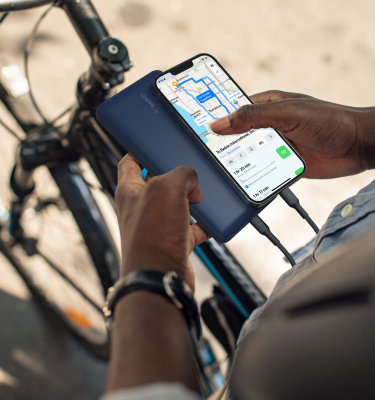Portable Chargers and Power Banks FAQ
A power bank is a portable device that stores electrical energy for charging your electronic devices like smartphones, tablets and laptops.
You can hand-carry your portable chargers on a plane with a capacity of up to 100Wh. Please refer to the policy of airline company for more information.
Yes, you can hand-carry your portable chargers on a plane with a capacity of up to 100Wh. Please refer to the policy of airline company for more information.
Usually portable chargers are e charged when they leave the factory.
You do not need to reset your powerbank for operation.
Once you fully charge the portable charger from a source such as a USB wall charger, energy will be stored in the unit. You can use it to charge other devices by connecting a USB cable.
It depends on the capacity of your power bank. Generally it can charge your phone to give additional video playback from 19 hours to 78 hours.
Yes, you can hand-carry your portable chargers on a plane with a capacity of up to 100Wh. Please refer to the policy of airline company for more information.
According to TSA regulations, power banks with a capacity of 100Wh (watt-hours) or less are allowed in carry-on and checked bags. If your power bank has a higher capacity, you may need to obtain approval from the airline. TSA agents may ask you to remove your portable charger from your luggage for inspection. Be prepared to do so and make sure it's easily accessible.
You could recharge the portable charger with a power source such as a USB wall charger. Charging a portable power bank is typically a simple process. Here are the general steps you can follow:
1. Check the power bank's capacity: Most power banks have a capacity rating in mAh (milliampere-hours), which indicates how much energy they can store. Check the capacity of your power bank to know how many times you can recharge your device with it.
2. Use the correct cable: Most power banks have a charging cable included when purchased. If your power bank doesn't come with a cable, you will likely use the same cable you use to charge your device.
3. Connect the cable to the power bank: Insert one end of the cable into the power bank's input port. The input port is usually labeled "input" or "in" and may be a micro-USB, USB-C, or Lightning port, depending on the power bank.
4. Connect the cable to a power source: Plug the other end of the cable into a USB wall charger or a USB port on a computer. Make sure that the power source can supply the necessary amperage and voltage to the power bank.
5. Start charging: Once the power bank is connected to the power source, it should start charging automatically. Most power banks have LED lights or a display indicating charging status. The lights may blink or turn off when the power bank is fully charged.
6. Disconnect and use: When the power bank is fully charged, disconnect it from the power source and use it to charge your device. Some power banks have multiple output ports to charge multiple devices simultaneously.
It's important to note that the charging time may vary depending on the capacity of the power bank, the capacity of the device being charged, and the amperage and voltage of the power source. Be sure to use the right cable and power source to ensure safe and efficient charging.

_MPP242_MagneticWirelessPowerBank5K+Stand_FPK_WH_Shot1_Web.jpg?sw=280&sh=280&sm=fit&sfrm=png)










